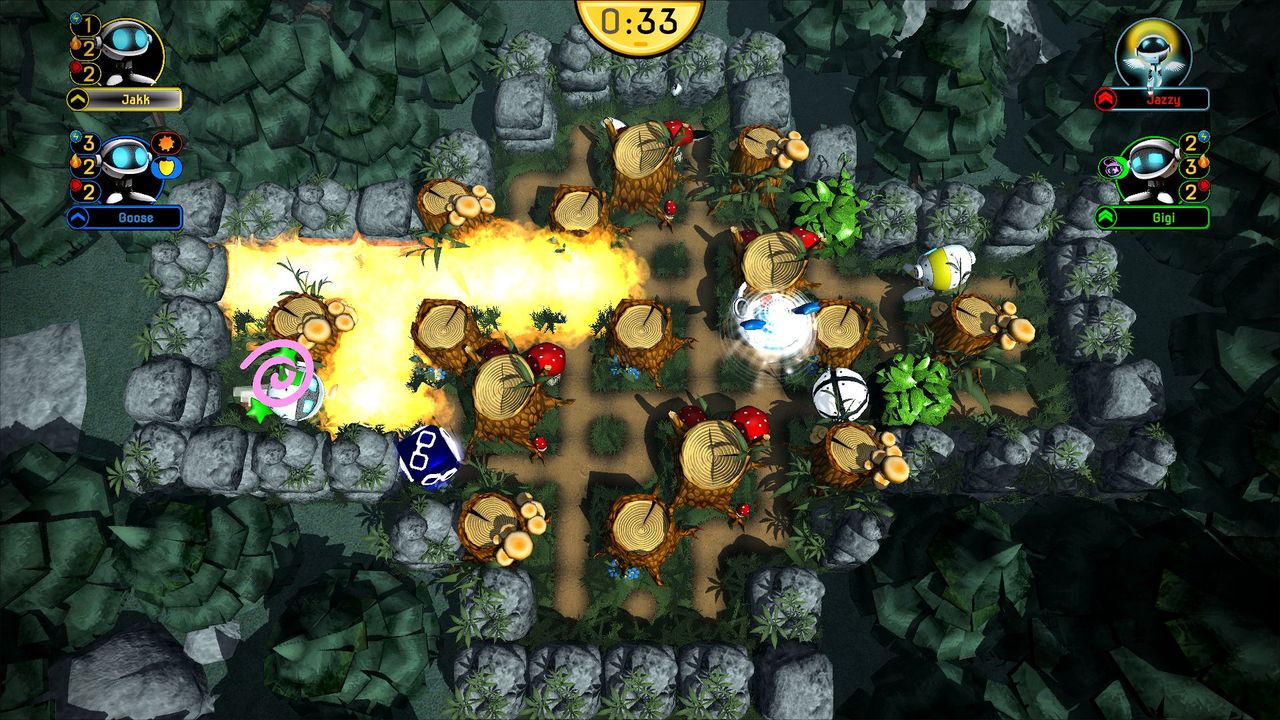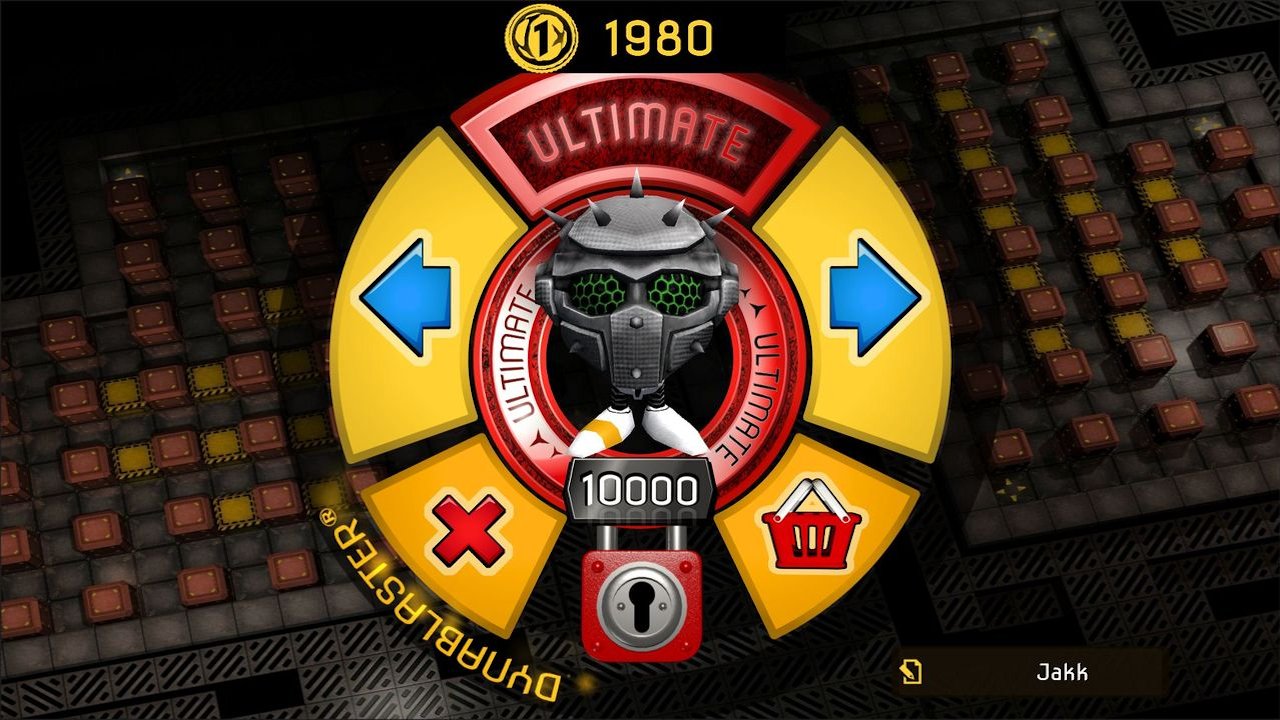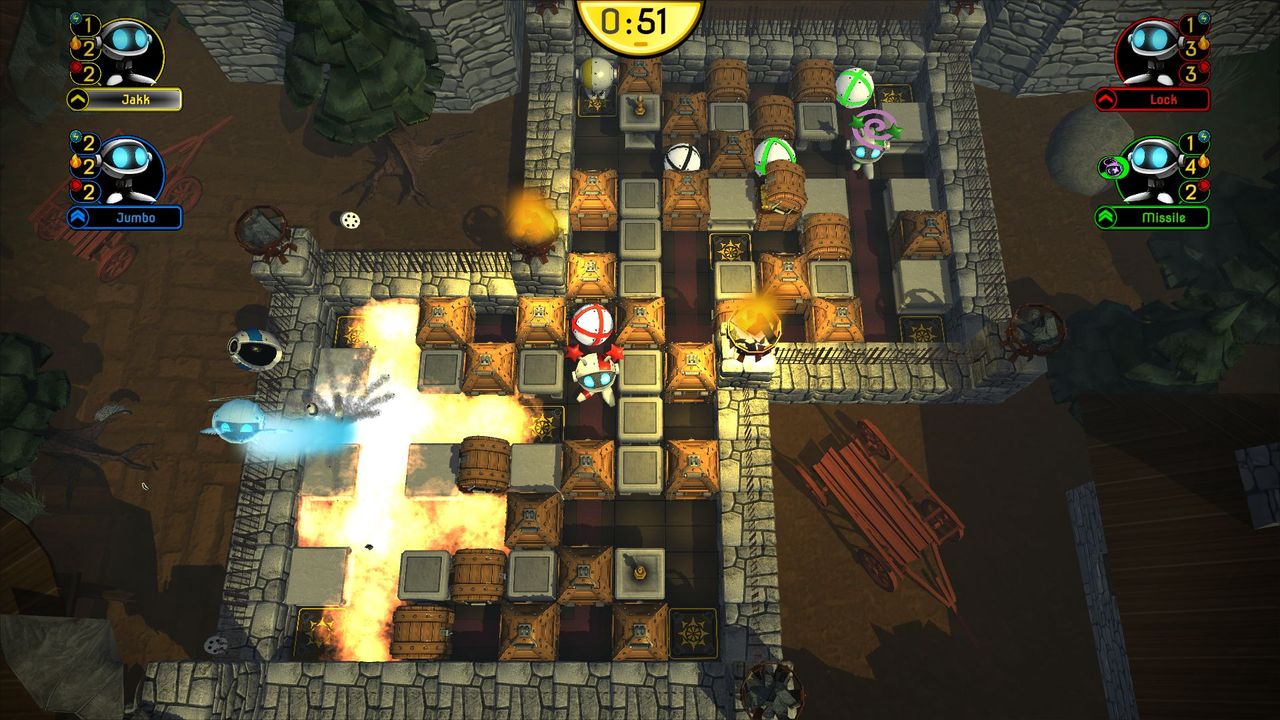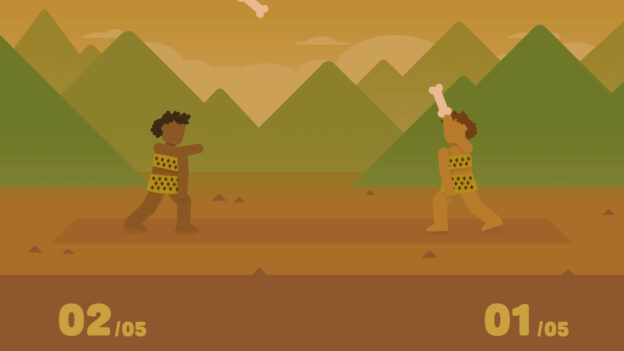Review: Dynablaster (Nintendo Switch) – Pure Nintendo
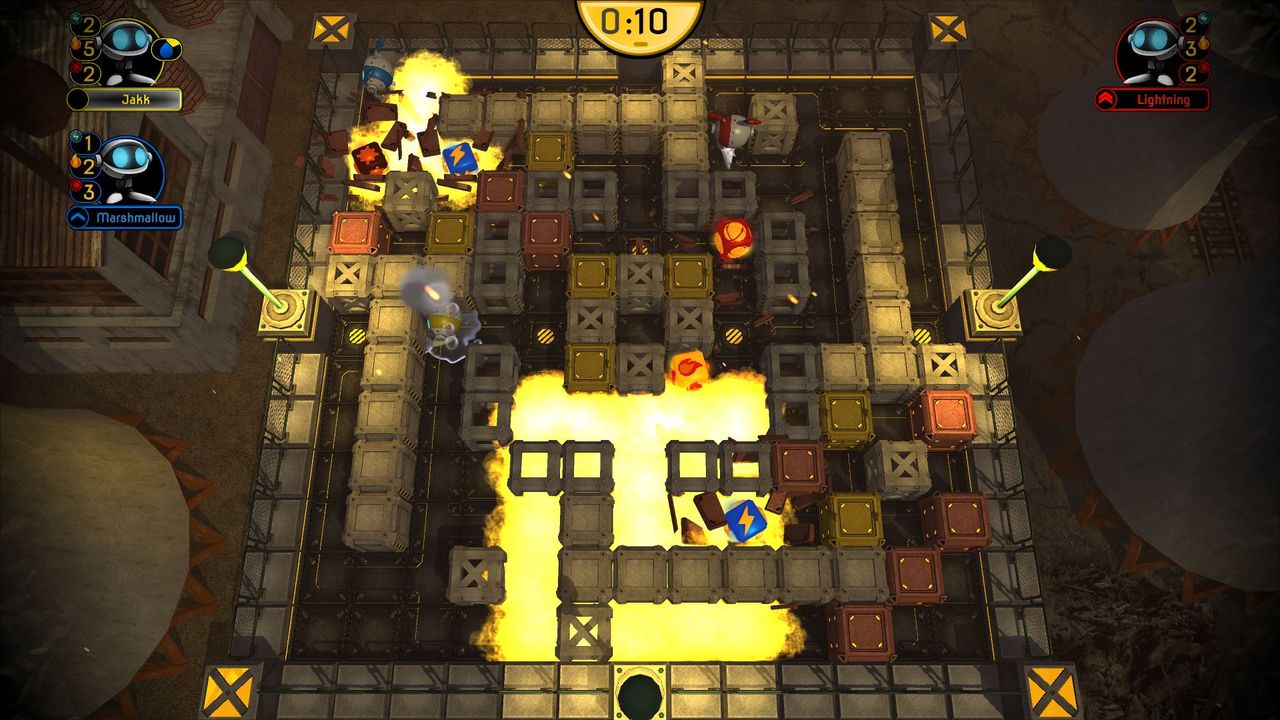
Recently, Pure Nintendo took a look at BBG Entertainment’s Shark! Shark! The original game was released for Intellivision in 1982, and the remake was intended for inclusion on the perpetually troubled Intellivision Amico. BBG was also developing Dynablaster for the Amico, but this one’s origins are a bit more confusing.
If you haven’t figured it out from the screenshots, Dynablaster is basically Bomberman. From what I’ve learned, the original Bomberman games were renamed Dyna Blaster in Europe to distance themselves from terrorist bombings at the time. So, what you’re getting here is an updated presentation of the early Bomberman releases.
“Hold up, Hiner,” you say. “Didn’t we just get that with Konami’s Super Bomberman R 2?”
Yes, you did, but it’s not entirely fair to compare the two. Super Bomberman R 2 is a full-fledged evolution of the franchise. Dynablaster is simply a reskinning of the core gameplay mechanic, albeit with some modern features.
Gameplay is very simple to pick up. You run around a Pac-Man style maze, dropping bombs to uncover power-up items and clear paths. Your opponents are doing the same, with the shared goal of blowing each other up until you’re the last one standing. This is easier said than done, as trapping enemies without blowing yourself up can be quite tricky.
Various power-ups can be acquired to help out: move faster with the Nitro power-up, disarm bombs with the Watering Can, set movement traps with the Mine, retreat to your starting point with Teleport, and so on. The power-ups become as important here as they are in, say, Mario Kart, in that it becomes quite difficult to win without mastering their use.
The action takes place across 50 levels in five worlds, but the game pretty much looks and plays the same throughout. Single-player mode carries you through them all and puts you up against some interesting bosses, but otherwise doesn’t do much to compel you forward. Character customization options can be unlocked, but once I got the derby, I was done.
So, the fun is in multiplayer. Up to four players can go at it locally or online, although you may be hard-pressed to find online opponents. If you can assemble a group, the frenetic energy of the Bomberman games is on display here. The action is comically chaotic, and it’s just more fun to play with people who are as prone to mistakes as you are. The AI, unfortunately, never really does anything stupid, and that strips away the entertainment value. Where’s the joy if you can’t make fun of your opponent for blowing itself up?
My favorite gameplay variation is a co-op mode where you must uncover a key before the enemy destroys you. The first level has one key, the second has two, and so on. If you blow up the box with the key, pick it up. Great. If the enemy finds you, you have to get past the enemy’s defenses to retrieve it. It’s a unique take on the core gameplay that increases the lifespan of the game.
And that’s my main issue with Dynablaster. It’s fun for a bit, sure, and you may occasionally pull it out for a gaming party. But it’s not a $20 game. I was fine with Shark! Shark!’s $15 price tag because of its unique gameplay and chill, family-friendly co-op vibe (not to mention its nostalgic value for Intellivision owners). Dynablaster is more expensive but less appealing to that audience. If you’re really into chaotic, argument-inducing, bomb-dropping multiplayer action, don’t you already have either of the Switch-compatible Super Bomberman games?
And, as with Shark! Shark!, the retro value of the release is lost if there’s no option to play with the original visuals and audio.
So, although Dynablaster is a well-developed game that provides some fun multiplayer action, I’d be more comfortable recommending it at half the price.

